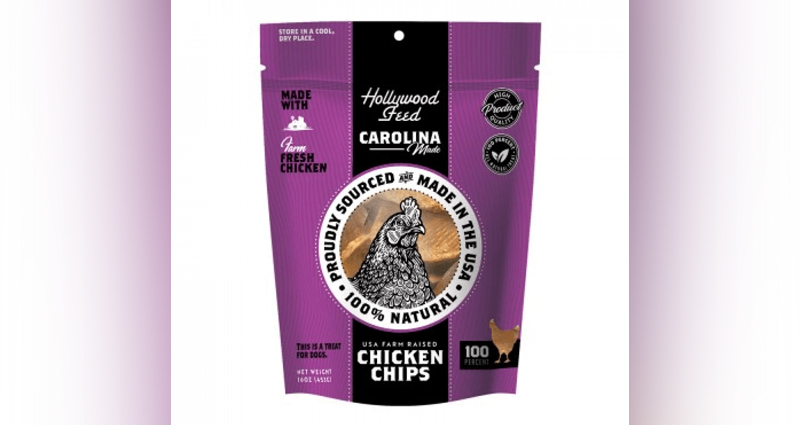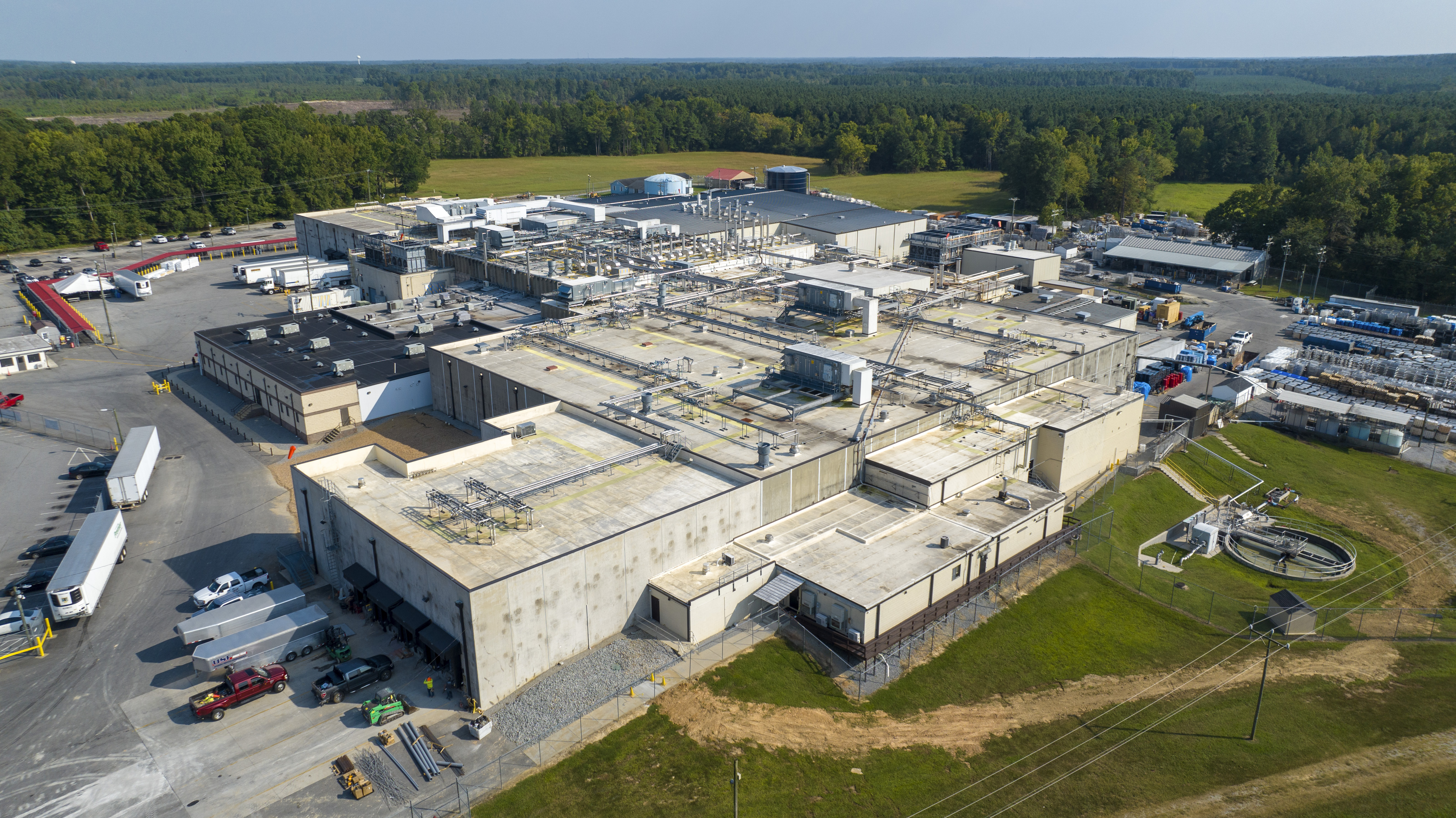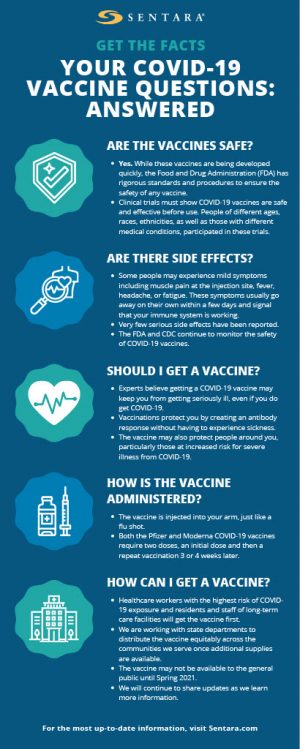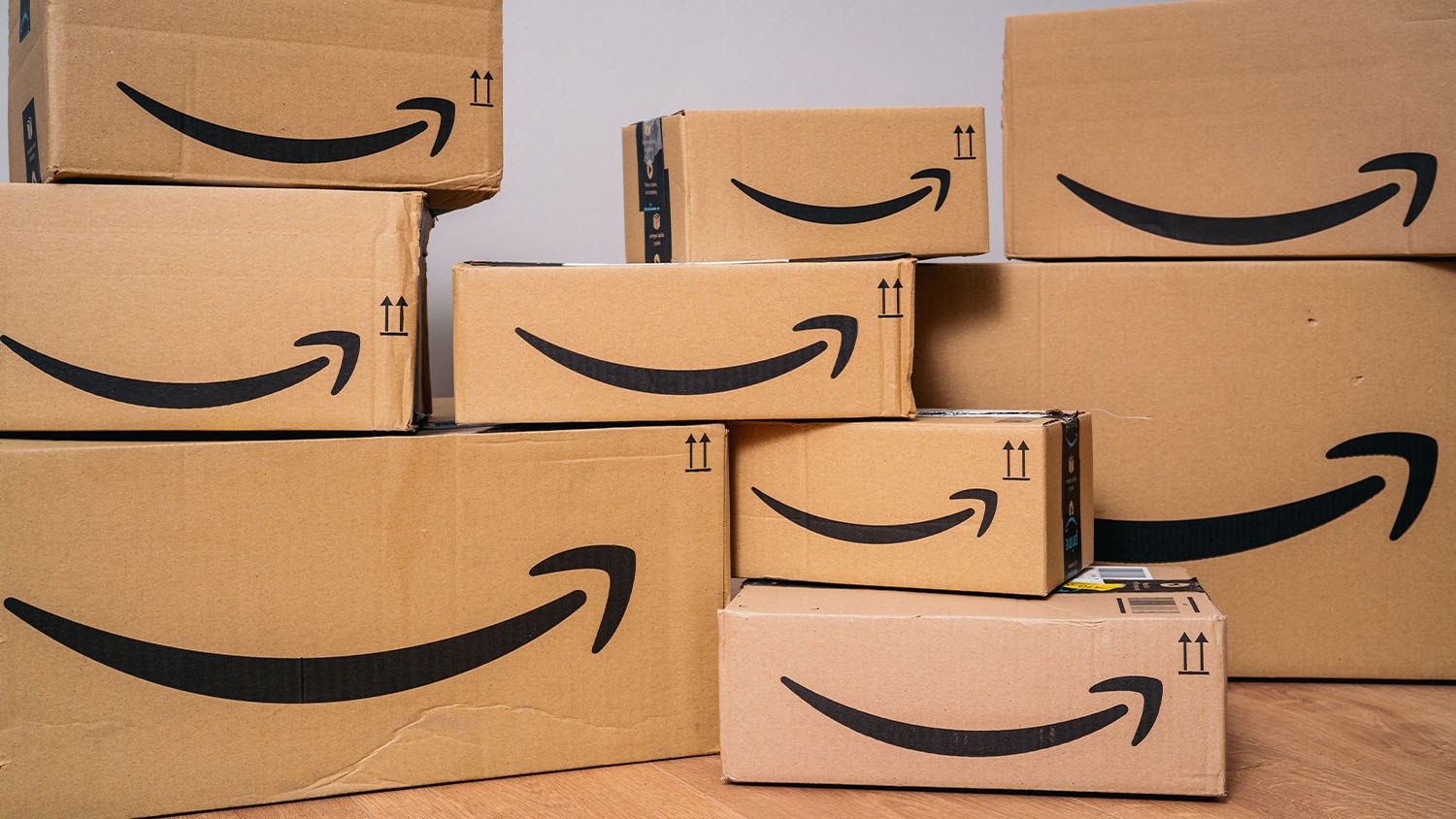RICHMOND, Va. (WAVY) — For the foreseeable future, the amount of COVID-19 vaccinations a Virginia city or county receives each week will be based on its total population, not just those currently eligible for the vaccine.
This latest development comes as the entire state transitions into the second group of people listed as a priority to get the vaccine — known as Phase 1b. Health officials believe it could take two to three months to get shots in the arms of the more than 1.2 million people in that group.
The huge undertaking hasn’t gotten off to the best start, with public leaders calling the state’s rollout complicated and frustrating. Hampton Roads city leaders have sent several letters to the governor encouraging better communication.
North Carolina officials have told 10 On Your Side that some Virginians are even making the trip south to receive their vaccination, after Hampton Roads became the last region to move to latest phase.
In a press call Friday with reporters, Dr. Danny Avula, the head of the state’s vaccine rollout plan as well as the director of the Richmond and Henrico County Health Departments, said most of the issues come down to one word: supply.
“Vaccine supply is a really significant issue,” Avula said.
Virginia is only getting about 105,000 doses per week, which isn’t expected to increase until March, and Avula says he’s getting requests for around 300,000 from health care providers across the commonwealth. Basically, Virginia is just not getting enough vaccine doses from the federal government to move forward with its original timeline.
It is one of the reasons Avula said the state is moving to an allocation plan based on population density.
“For example, Chesapeake is 3% of Virginia’s population and they got 3% of the 105,000 doses this week,” Avula said. “And then the district has to determine what are the channels that the vaccine is going to come through, how much is going to happen through mass events like this. How much are we going to rely on pharmacies and private providers, and how much are we going to rely on the health systems for.”
All areas of the state have now announced plans to move into Phase 1b, which includes front-line workers, such police officers, teachers, grocery store workers as well as all people 65 and older and people with certain conditions that increase their risk of becoming severely ill.
Vaccinators will also continue giving shots to those in Phase 1a: long-term care and health care workers.
“That leaves pretty small dose amounts for various communities,” Avula said.
It means small dose amounts, especially in communities where those now eligible for the vaccine make up a sizable amount of the total population. Under the distribution plan, Accomack County on Virginia’s Eastern Shore would only receive less than .5% of the state’s weekly doses, but 12% of its workforce works in two poultry processing plants.
“At this point we can’t send them extra doses,” Avula said.
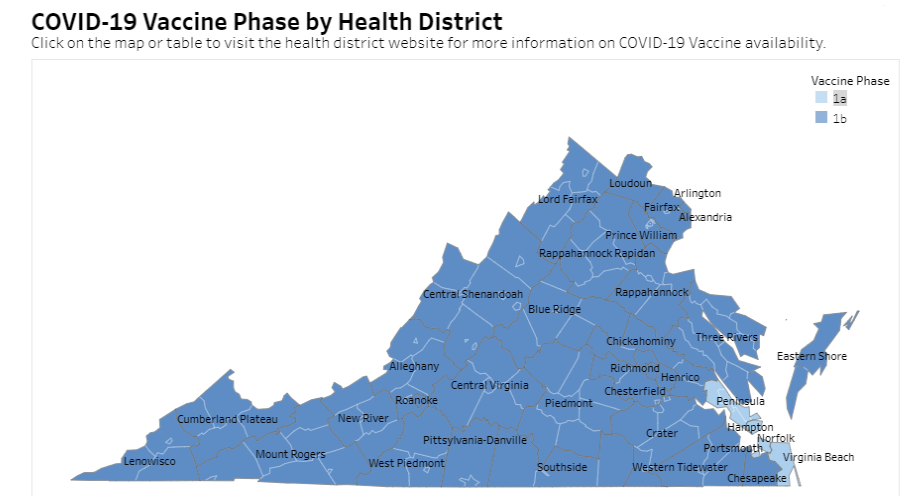
Local private healthcare providers — Riverside, Sentara and Bon Secours — are helping with the effort. They have started 1b vaccinations for their employees and those who have a primary care physician with these providers.
But still they say supply is still limited, with all five Sentara locations in Hampton Roads already booked up after Sentara announced Wednesday it was starting 1b vaccines for people 75 and older first.
Long-term care facilities and vaccinating 1a
- CVS and Walgreens are still working to vaccination Virginia’s long-term care facilities (nursing homes, independent living, etc.) and all skilled nursing homes are either completed or will be complete by the end of January.
- CVS and Walgreens were earmarked 226,000 doses as part of Virginia’s 900,000-plus doses total dose allotment from the federal government. Avula says Virginia officials have been in contact with leaders from the two private pharmacies to get the vaccinations done more quickly and says Virginia may have to reach out to local pharmacies for help (West Virginia chose not to use CVS and Walgreens entirely and just used local pharmacies with much success so far).
- Avula said one more thing making it difficult to vaccinate some nursing home residents are active outbreaks at the facilities that require them to delay vaccinations by one or two weeks.
- CVS and Walgreens have reported 56,000 of 226,000 doses they were given for nursing homes have been administered so far.
Why is there a large gap between doses distributed vs. doses administered?
Virginia is near the bottom of states and the District of Columbia in administering the vaccine, per the Centers for Disease Control.
- Virginia has now administered about 400,000 doses of the 960,000 doses it’s received.
- About 226,000 of those distributed to Virginia were earmarked for CVS and Walgreens
- A “chunk of the doses” were distributed “but for various reasons” they are either in the process of being distributed to other facilities or facilities were unsure if they were getting a 2nd dose so they held their supply to make sure they had that second. With that, Avula says going forward VDH is asking health providers to use up their alloted doses with the assurance from the federal government a 2nd dose will be shipped on a schedule
- Also about 90,000 doses have been administered, but due to data lag (including having to manually input data in some instances) they have not been added to that “doses administered” tally. Avula says he expects the data input to be corrected in the next 48 to 72 hours.

















































